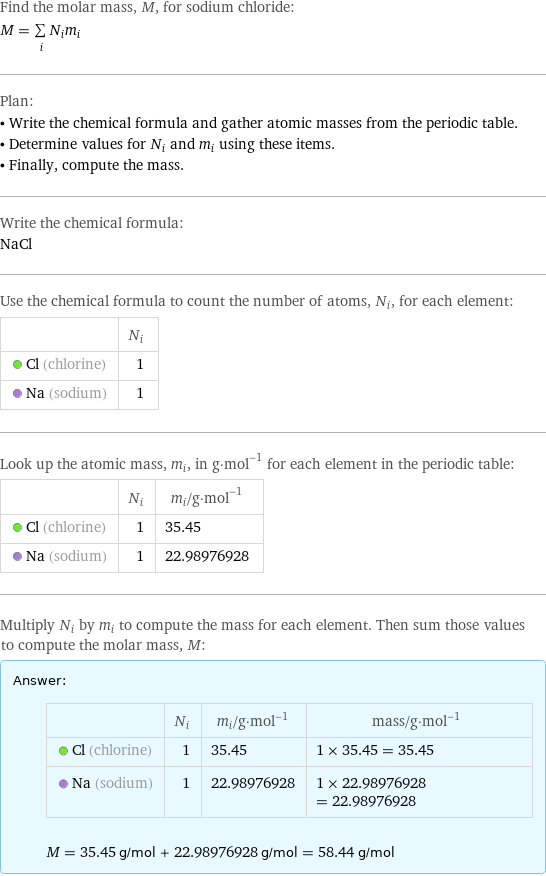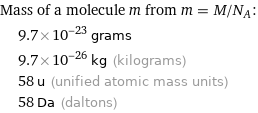Input interpretation

sodium chloride | molar mass
Result

Find the molar mass, M, for sodium chloride: M = sum _iN_im_i Plan: • Write the chemical formula and gather atomic masses from the periodic table. • Determine values for N_i and m_i using these items. • Finally, compute the mass. Write the chemical formula: NaCl Use the chemical formula to count the number of atoms, N_i, for each element: | N_i Cl (chlorine) | 1 Na (sodium) | 1 Look up the atomic mass, m_i, in g·mol^(-1) for each element in the periodic table: | N_i | m_i/g·mol^(-1) Cl (chlorine) | 1 | 35.45 Na (sodium) | 1 | 22.98976928 Multiply N_i by m_i to compute the mass for each element. Then sum those values to compute the molar mass, M: Answer: | | | N_i | m_i/g·mol^(-1) | mass/g·mol^(-1) Cl (chlorine) | 1 | 35.45 | 1 × 35.45 = 35.45 Na (sodium) | 1 | 22.98976928 | 1 × 22.98976928 = 22.98976928 M = 35.45 g/mol + 22.98976928 g/mol = 58.44 g/mol
Unit conversion

0.05844 kg/mol (kilograms per mole)
Comparisons

≈ ( 0.081 ≈ 1/12 ) × molar mass of fullerene ( ≈ 721 g/mol )

≈ 0.3 × molar mass of caffeine ( ≈ 194 g/mol )

≈ 3.2 × molar mass of water ( ≈ 18 g/mol )
Corresponding quantities

Mass of a molecule m from m = M/N_A: | 9.7×10^-23 grams | 9.7×10^-26 kg (kilograms) | 58 u (unified atomic mass units) | 58 Da (daltons)

Relative molecular mass M_r from M_r = M_u/M: | 58